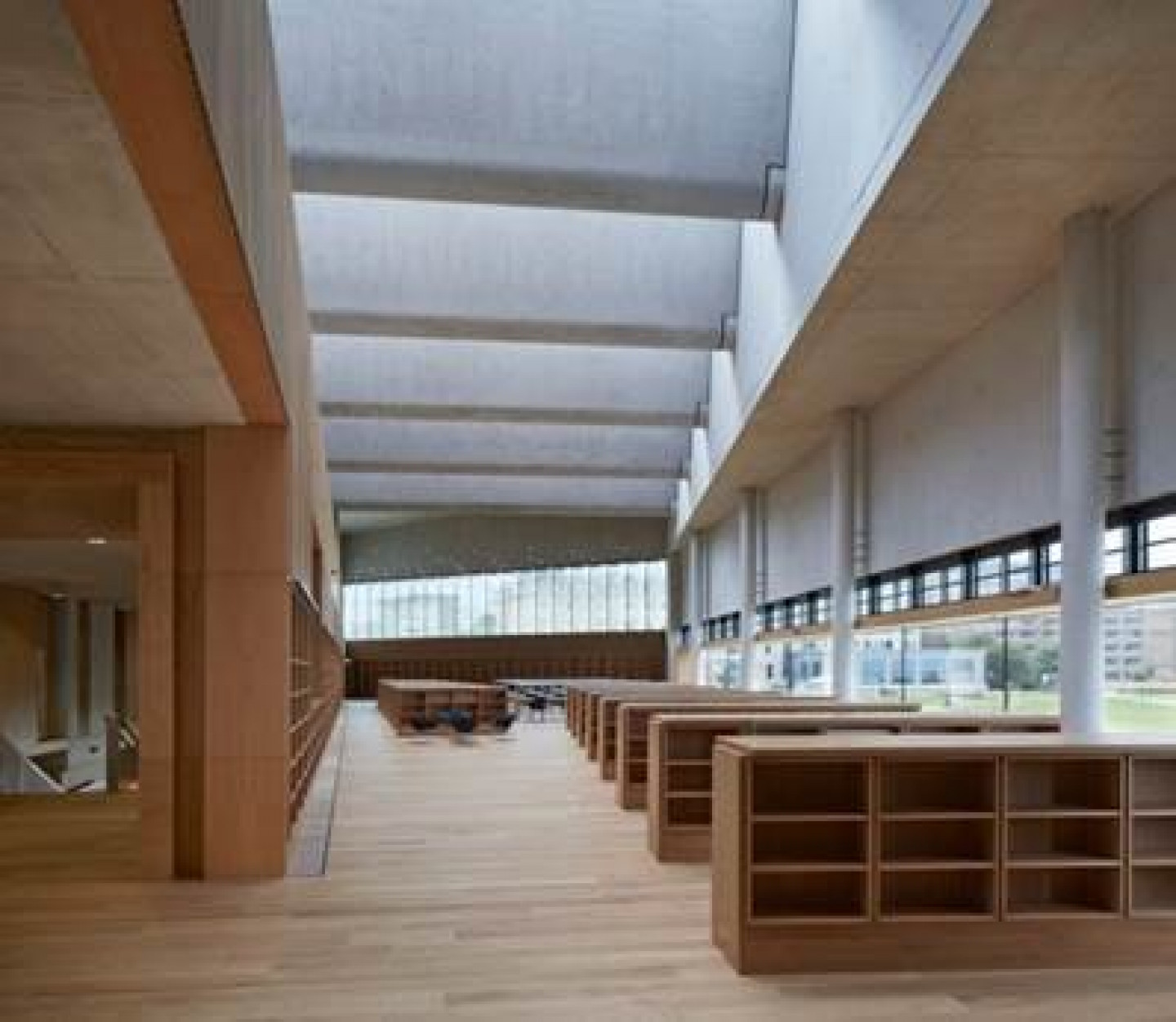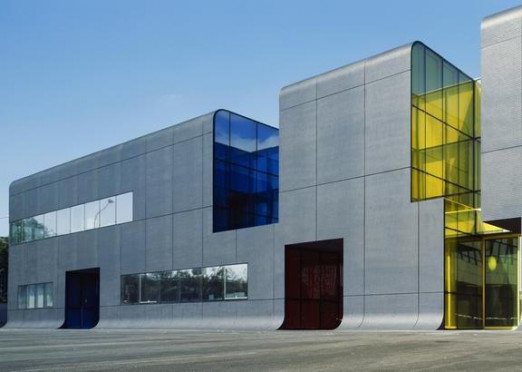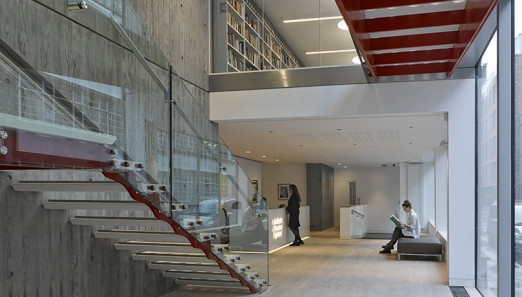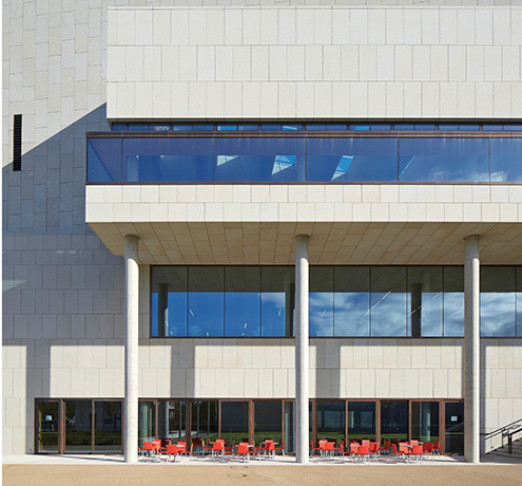Speakers:
Adam Knight of Hugh Broughton Architects
Bruce Martin of Expedition Engineering
IStructE offices, Bastwick St, London
Louise Cotter of Carr Cotter & Naessen Architects
Karel Murphy of Horganlynch Consulting Engineers
The Lexicon, new library, County Dublin
IStructE offices, Islington
The new premises for the Institution of Structural Engineers are located in a refurbished 1960s' building on Bastwick Street, Islington and provide a public conference centre, members’ facilities and library, as well as flexible workspaces for the Institution’s staff.
The new glass-fronted entrance, reception and exhibition space is dominated by a finely detailed horizontal cantilevered staircase in precast concrete and steel; a contemporary reinterpretation of the traditional cantilevered stone stair that characterised the Institution’s former home. The stair is also supported by an exposed in-situ concrete wall, with the textural grain of Douglas Fir imprinted into its surface.
This retrofit project celebrates a spirit of collaboration between architect, engineer and client, epitomised by the attention to detail in the concrete on show.
The Lexicon, Dun Laoghaire
The DLR Lexicon is a new landmark in the ferry port of Dun Laoghaire, Ireland. Standing 29m tall, on the seafront, it provides a new library and cultural centre for the community. The building is clad in pale granite, but it is the use of concrete that is remarkable. Exposed on the inside, the concrete structure is imaginative, is used for environmental benefit and features a beautiful finished interior.
Structural support is provided by solid in-situ reinforced concrete walls rather than a frame. Floors are created using inverted T-beams and the roof is supported by impressive large precast concrete V-beams, which tie the building together at the top. The smooth, pale exposed concrete provides significant areas of thermal mass - storing heat in winter and coolness in summer. The passive environmental strategy includes up-flow and down-flow shafts in the central spine of the building for natural ventilation. As a whole, the building demonstrates how concrete can simultaneously deliver structural, aesthetic and environmental goals.
Please note that this event is free to attend but booking is essential.
Chaired by Elaine Toogood
Produced by The Building Centre and The Concrete Centre



